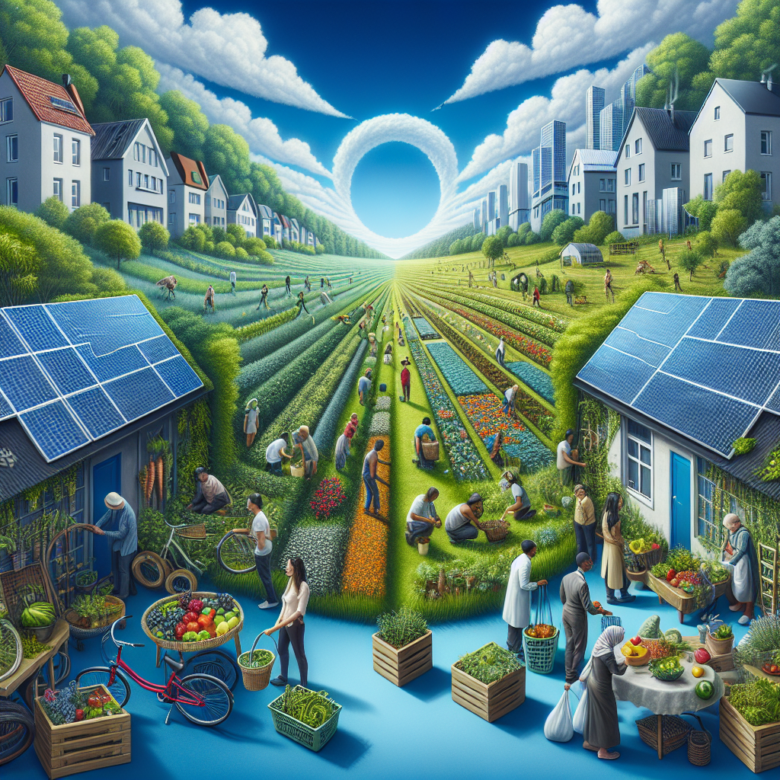In today’s world, sustainable living has become more essential than ever. This article explores the concept of sustainable living, providing insights into eco-friendly practices that individuals and communities can adopt. We will discuss various aspects of sustainable living, from reducing waste to adopting renewable energy sources, aiming to inspire readers to make conscious choices for a healthier planet.
Understanding Sustainable Living
Understanding sustainable living involves a holistic approach to preserving the environment and ensuring resources are available for future generations. In today’s society, defined by climate change and environmental degradation, sustainable living is crucial for reducing carbon footprints and protecting our limited natural resources. By lowering greenhouse gas emissions and minimizing waste, individuals can significantly contribute to a more sustainable future.
Key components of sustainable living include energy conservation, where utilizing renewable sources like solar and wind power reduces dependence on fossil fuels. Waste reduction comprises practices such as recycling and composting, which lessen landfill contributions and enrich soil. Moreover, promoting biodiversity through responsible land use supports ecosystems and enhances food security.
The positive impacts of sustainable living permeate both the environment and communities. For example, energy-efficient buildings decrease utility costs and improve air quality, while local farming boosts the economy and reduces transportation emissions. By embracing sustainable practices, individuals can cultivate a healthier planet and vibrant communities, fostering resilience for years to come.
Practical Steps to Live Sustainably
Implementing sustainable living can feel overwhelming, but small, practical steps can lead to significant impacts. One effective strategy is to reduce single-use plastics. Start by carrying a reusable water bottle, cloth bags, and stainless steel straws. This not only minimizes plastic waste but also sets an eco-conscious example for others.
Composting at home is another impactful practice. By setting up a compost bin for kitchen scraps like vegetable peelings and coffee grounds, you create nutrient-rich soil for gardening while diverting organic waste from landfills. A simple beginner’s compost bin can be made from an old container; just remember to keep a balance of greens (nitrogen-rich materials) and browns (carbon-rich materials).
Utilizing public transport reduces your carbon footprint significantly. Whenever possible, opt for buses or trains instead of driving. This not only cuts down on emissions but also fosters a sense of community.
Buying local produce and supporting ethical brands enhances sustainability by reducing the carbon footprint associated with long-distance transportation. Look for farmers’ markets or community-supported agriculture (CSA) programs as they often yield fresher produce while supporting local economies.
To get started, choose one small change each week—reduce plastic use one week, begin composting the next, and so on. Over time, these individual choices can lead to collective action that drives substantial environmental impact.
The Role of Renewable Energy
The shift towards renewable energy is pivotal in the pursuit of sustainable living, acting as a crucial strategy for both individuals and communities. Utilizing sources such as solar, wind, and hydroelectric power, we can significantly reduce dependence on fossil fuels, thus mitigating greenhouse gas emissions. **Solar energy**, harnessed through panels installed on rooftops or in community solar farms, provides an accessible option for homeowners and businesses alike to generate clean electricity. **Wind energy**, captured via turbines, can be deployed both at an individual level and in large-scale wind farms, supplying local grids with environmentally friendly power. Moreover, **hydroelectric power**, derived from flowing water, remains a reliable source, powering entire communities.
Transitioning to these renewable systems often entails initial investment but can lead to considerable long-term savings. Many governments offer financial incentives such as rebates, tax credits, and grants to ease this transition. Communities can collaborate to establish shared renewable energy projects, reducing costs and increasing access. By embracing renewable energy, we not only foster economic savings but also create a cleaner, healthier environment for future generations.
Building a Sustainable Community
Harnessing the spirit of cooperation is critical in building sustainable communities. Individuals can band together to create vibrant neighborhoods that reflect eco-friendly values through community gardens, local recycling programs, and educational workshops. Community gardens not only provide fresh produce but foster a sense of belonging and mutual support, transforming vacant lots into green oases while encouraging biodiversity.
Local recycling initiatives can significantly reduce waste, with successful programs often led by neighborhood associations or local governments. Examples like the “Zero Waste” goal in San Francisco showcase how collective efforts can yield impressive results. Educational workshops can further enhance this movement, increasing awareness about sustainability practices and empowering residents to take action.
The role of local governments and organizations is pivotal. They can provide resources, funding, and advocacy for sustainable initiatives. Strategies to promote community engagement include hosting regular clean-up days, creating neighborhood composting programs, and building local businesses that prioritize sustainable practices. By uniting around shared goals, communities can cultivate resilience, paving the way for a more sustainable future while strengthening the bonds that tie them together.
Conclusão
In conclusion, sustainable living offers numerous benefits not only for the environment but also for individual well-being. By embracing eco-friendly practices and reducing our carbon footprint, we contribute to a sustainable future. Adopting these habits can significantly impact our planet, encouraging others to make similar changes. Together, we can foster a healthier Earth for generations to come.

